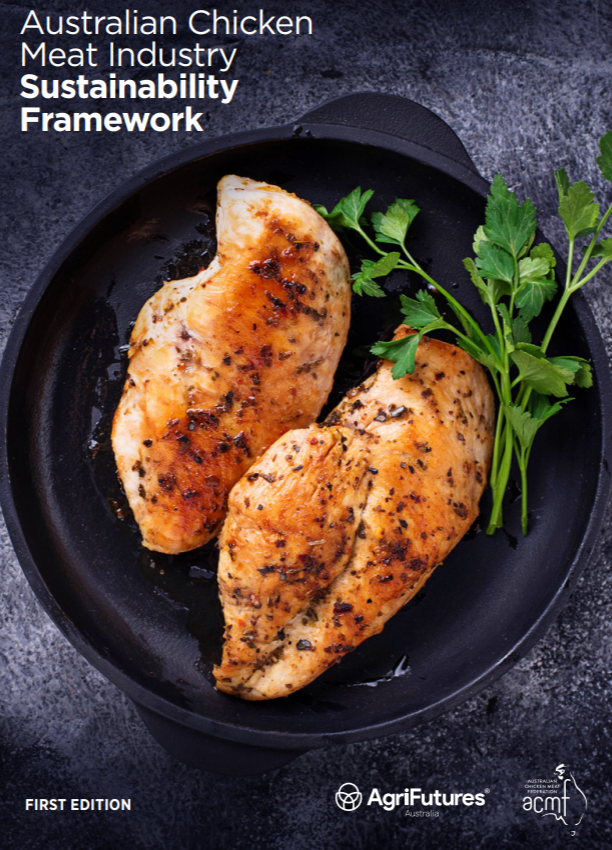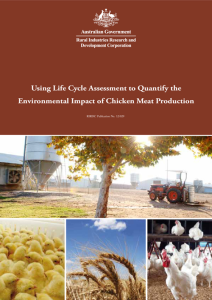Our SUSTAINABILITY

The Australian Chicken Meat Industry Sustainability Framework
Like many other industries, the Australian chicken meat industry is actively working on determining meaningful and achievable ways to reduce our environmental impact and further improve the sustainability of the sector, with several initiatives already underway.
We have worked with experts in our industry and our R&D provider AgriFutures to develop a Chicken Meat Sustainability Framework that will further showcase industry’s sustainability commitments and credentials.
Click here to view our sustainability framework on a desktop.
Click here to view our sustainability framework on a smart phone or tablet.
Most environmentally sustainable meat
Life cycle analyses of the Australian chicken meat industry confirm that commercial chicken meat production is the most environmentally sustainable system for the production of land-based animal protein.
most efficient converters of feed
One of the biggest determinants of how much energy is used, and greenhouse gasses created, in the production of livestock products (like chicken and other meats and dairy products) is how efficiently the animals convert feed into edible products. This is because feed represents the biggest source of these impacts. The good news is that chickens are the most efficient converters of feed into the meat of all land-based livestock species.
This has improved significantly over the last 45 years.
Source: The data in the above graph are ACMF estimates of industry-wide Converted FCR (CFCR), which is FCR (kg feed/kg liveweight), normalised for s standard chicken weight of 2.6kg.
More info
Chickens are raised large barns that have been designed so that they provide birds with ideal climatic conditions. They have food and water provided continuously, and they are fed a diet has been specially formulated for each stage of growth. This means that their growth is optimised and the amount of feed the birds require to grow is just what they need.
Using this farming system, the amount of energy that the chickens put into maintaining their body temperature and in finding food and water is low. This results in more efficient use of feed, energy and water to produce each kilogram of chicken meat, and therefore less greenhouse gas emissions created.
The same applies for free range production systems, where the chickens are also housed in large sheds, but they have access to an outdoor range area during daylight hours once they have reached an age where they are relatively safe from predation and can better cope with variable outside temperatures.
In terms of waste, used bedding is re-used in composts or in organic fertiliser for a range of different applications, such as horticulture, viticulture, broadacre farming, pasture and turf farms. This results in virtually no wastage from chicken meat production.
30 per cent of processed birds not sold as meat products are recycled into by-products such as pet food.
Have more QUESTIONS?

